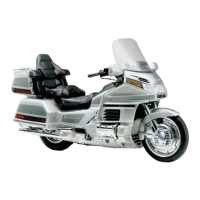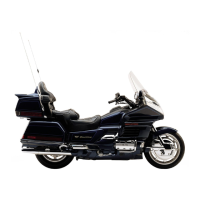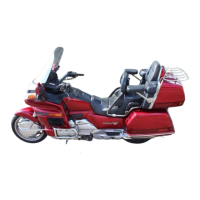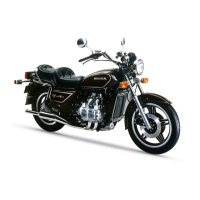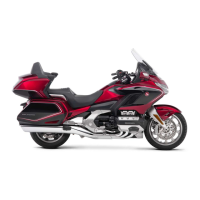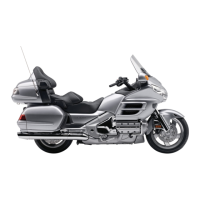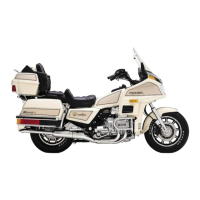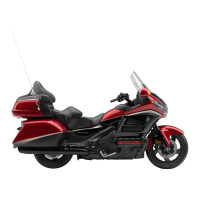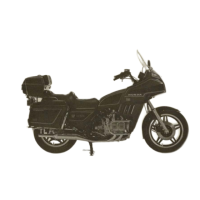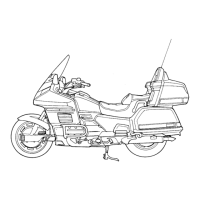
Do you have a question about the Honda Goldwing GL1500 SE and is the answer not in the manual?
| Compression Ratio | 9.8:1 |
|---|---|
| Starting | Electric |
| Final Drive | Shaft |
| Front Tire | 130/70-18 |
| Rear Tire | 160/80-16 |
| Bore x Stroke | 71mm x 64mm |
| Ignition | Computer-controlled digital |
| Transmission | 5-speed |
| Front Suspension | Telescopic fork |
| Rear Suspension | Pro-Link single shock |
| Front Brakes | Dual disc |
| Rear Brakes | Single disc |
| Wheelbase | 1, 690 mm (66.5 in) |
| Seat Height | 740 mm (29.1 in) |
| Fuel Capacity | 23 liters (6.1 gallons) |
| Horsepower | 100 hp |
| Torque | 150 Nm (110.6 ft-lb) @ 4000 rpm |
Essential safety practices, protective gear, and rules for operating the motorcycle safely.
Identification and overview of the motorcycle's key components and controls.
Detailed explanation of significant motorcycle systems and their functions.
Guide to specific controls and switches on the handlebars and instrument panel.
Description of additional features and accessories not directly related to basic operation.
Lists scheduled maintenance tasks based on mileage and time intervals for motorcycle upkeep.
Details the contents of the tool kit provided for roadside repairs and adjustments.
Location to record frame and engine serial numbers for identification and reference.
Location to record colour and code for ordering correct replacement parts.
Important safety guidelines and warnings to observe during maintenance procedures.
Procedures for checking and changing engine oil and filter for optimal engine performance.
Step-by-step instructions for safely removing and reinstalling the front wheel.
Step-by-step instructions for safely removing and reinstalling the rear wheel.
Guidance on inspecting brake pad wear and when replacement is necessary.
Information regarding battery electrolyte, handling, and general care.
Instructions for identifying and replacing blown fuses to restore electrical system function.
Recommended procedures for cleaning the motorcycle's exterior and various components.
Recommendations for preparing and storing the motorcycle for extended periods.
Steps to follow when taking the motorcycle out of storage for use.
Overall physical dimensions of the motorcycle, including length, width, and height.
Specifications for dry weight and maximum load capacity for different models.
Fluid capacities for engine oil, fuel tank, and cooling system.
Technical details of the engine, including bore, stroke, and spark plug specifications.
Specifications related to the motorcycle's chassis, suspension, and tyre sizes.
Details on gear ratios and final reduction for the motorcycle's power transmission.
Specifications for the battery and generator systems.
Specifications for the motorcycle's lighting systems, including headlights and signals.
Details on the types and ratings of fuses used in the motorcycle's electrical system.
